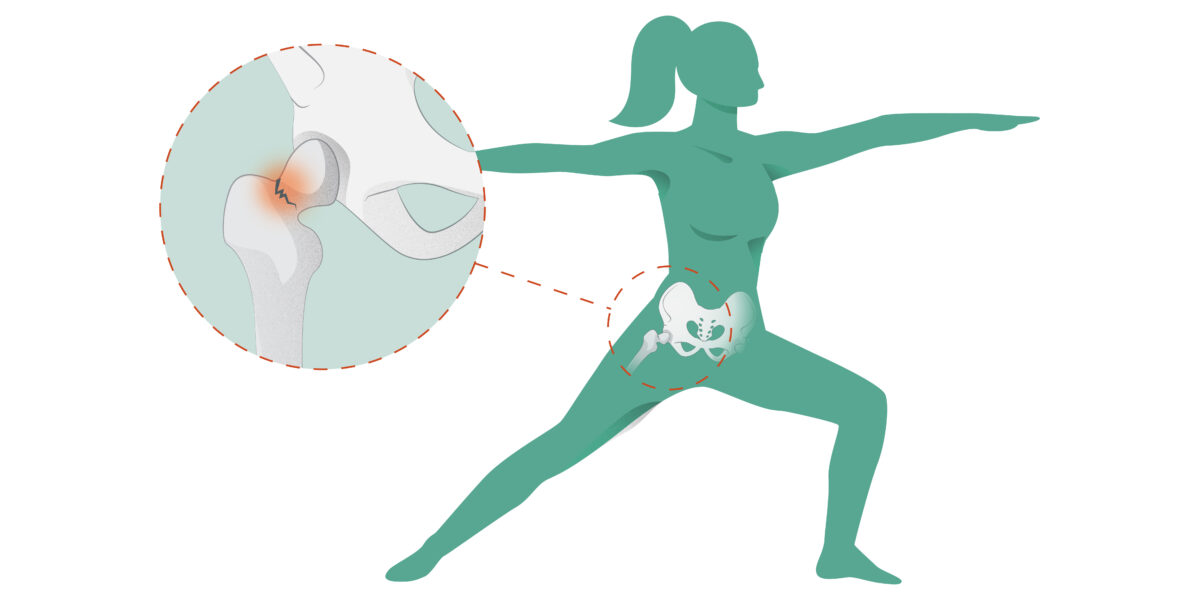Most people don’t know this tiny part of the hip exists—until it breaks. But a few simple moves can help keep it strong—and keep you on your feet.
What Is The Femoral Neck (and Why Should You Care)?

There’s a small, fragile section of bone that connects the top of your thigh bone to your hip. It’s called the femoral neck—and it’s one of the most common places for a hip to break.
Why? Because it’s made up primarily of what’s called trabecular bone—a soft, spongy type of bone that looks a bit like a honeycomb. And while that structure helps absorb shock, it also makes it far more vulnerable to bone loss.5
That’s why this little section gets special attention during your DEXA scan. If your femoral neck is weak, your entire hip is at risk.
Why This Bone Breaks So Easily
The femoral neck takes a beating. Every time you walk, sit, stand, climb stairs—or simply shift your weight—it’s under pressure. That constant stress, combined with its fragile structure, makes it one of the first places osteoporosis strikes.
And when it fractures? It’s not just painful. It’s life-altering. Because unlike a wrist or an ankle, a hip fracture can steal your mobility, your confidence—even your independence. Up to 50% of people who suffer a hip fracture never regain full mobility.6 And nearly 1 in 3 ends up in long-term care within a year.7
That’s the reality most people don’t hear—until it happens to them.But here’s the good news: If you strengthen this area now, you may never have to face that outcome.
The 3 Best Exercises to Protect Your Femoral Neck
These three movements are designed to safely apply load directly to the femoral neck, using your own bodyweight and minimal equipment..
Start slow. Focus on form. And remember—it’s not about doing more reps. It’s about doing them right.
Single-Leg Bridge
Why it works: Builds strength in your glutes and hamstrings while directly loading the femoral neck on one side.
How to do it:
- Lie on your back with arms at your sides, knees bent, and feet flat.
- Extend one leg straight (or keep it bent).
- Push through your grounded foot to lift your pelvis off the floor.
- Squeeze your glute at the top. Lower down slowly.
- Repeat for 30 seconds per leg.
Tip: Keep your hips level and don’t rush—control is key.
Reverse Lunge
Why it works: Trains balance, hip strength, and stability—all while loading the femoral neck on the lead leg.
How to do it:
- Stand tall with a chair or wall nearby for balance.
- Step your left leg back into a lunge. Keep your front knee above your ankle.
- Drop your back knee toward the floor (hover, don’t slam).
- Push through your front foot to stand back up.
- Repeat for 30 seconds, then switch legs.
Modify by keeping the back lunge shallow if needed.
Single-Leg Sit-to-Stand
Why it works: Mimics real-life movement and builds unilateral hip power—key for fall prevention and fracture protection.
How to do it:
- Sit in a sturdy chair, feet flat on the ground.
- Extend your left leg (or lightly rest the toe on the floor).
- Press through your right foot to stand up using mostly that leg.
- Sit back down with control.
- Repeat for 30 seconds per side.
Start with two feet if needed, and work your way toward single-leg reps over time.
Takeaway
You’ve just learned three of the most effective exercises for hip strength. For even more guidance, watch the full video.
For tips on exercising to keep your bones strong, especially if you have osteoporosis, take a look at our Ultimate Guide To Osteoporosis Exercises.And for the latest on healthy aging, subscribe to the AlgaeCal Newsletter. You’ll get helpful advice, updates, and insights right to your inbox.





Patricia Nash-Wohlfahrt
May 5, 2024 , 7:41 amI am thrilled to have found this product. I look forward to improvement in my next Dexa scan.